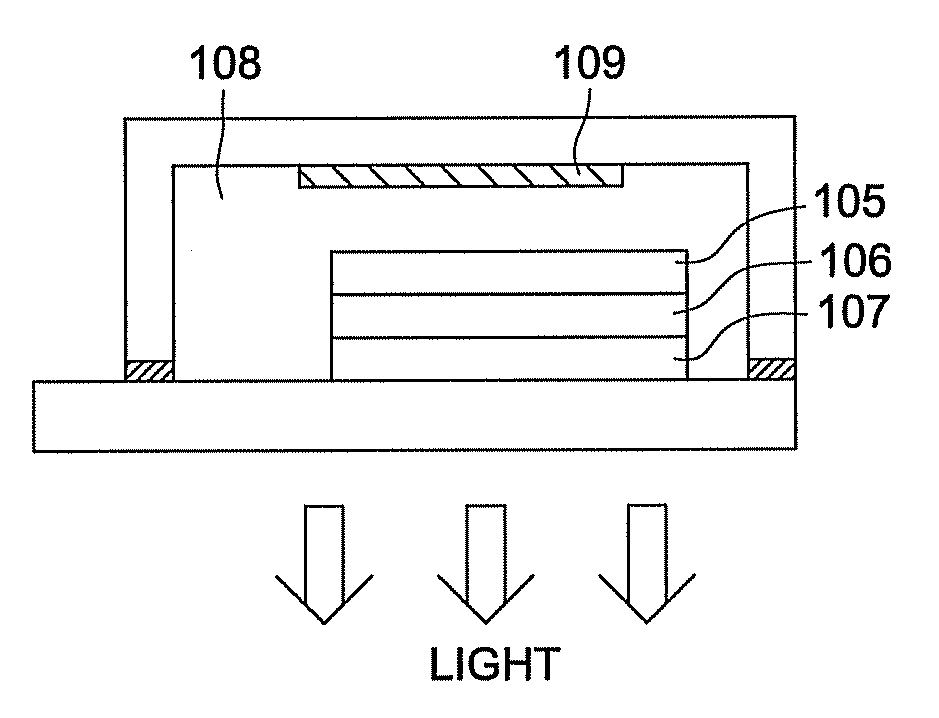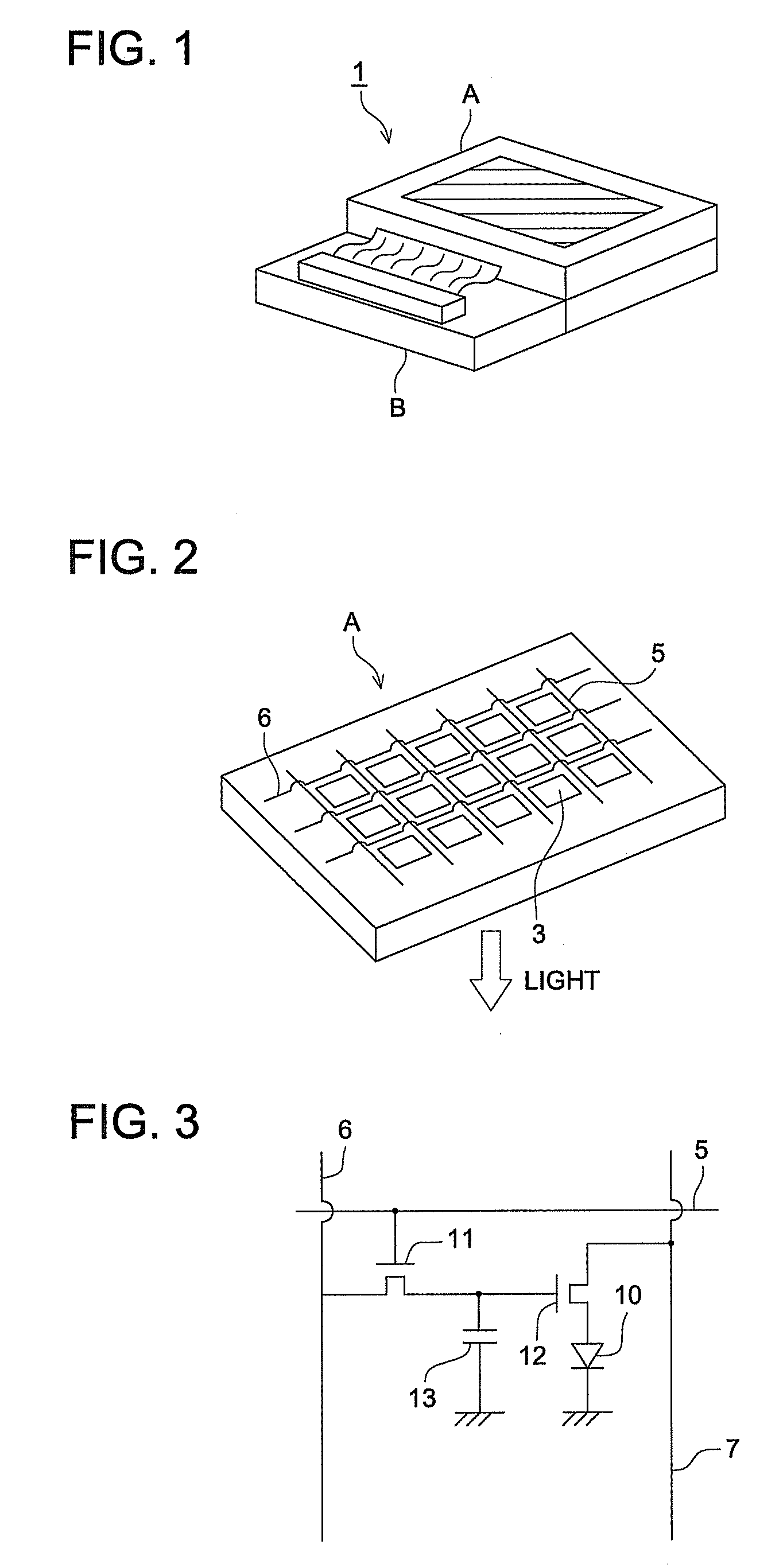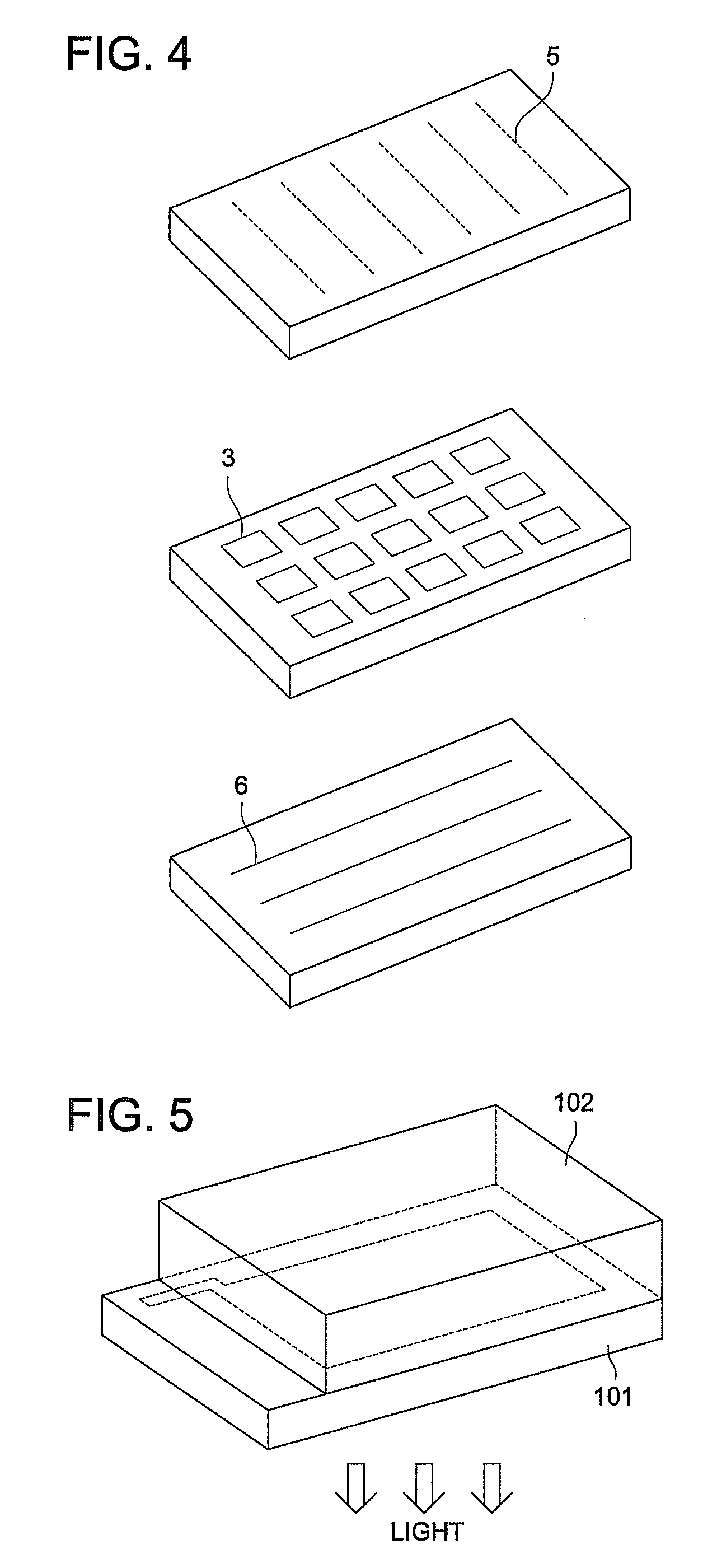Method for manufacturing organic electroluminescent device
a manufacturing method and electroluminescent technology, applied in semiconductor devices, coatings, nanotechnology, etc., can solve the problems of production equipment and energy efficiency, low light emission efficiency, and low production yield in the manufacturing process, and achieve high light emission efficiency, long life and suitability, and low voltage driving
- Summary
- Abstract
- Description
- Claims
- Application Information
AI Technical Summary
Benefits of technology
Problems solved by technology
Method used
Image
Examples
example 1
Preparation of Organic EL Device 1-1
(Constitution and Forming Method of Each of Constituting Layers)
[0335]1) Cathode: Al (Vapor deposition)
[0336]2) Cathode buffer layer: LiF (Vapor deposition)
[0337]3) Electron transfer layer: Alq3 (Tg: 175° C.), Dispersion liquid coating, Dissolvable range of solubility parameter: 8.8 to 10.0
[0338]4) Positive hole blocking layer: BAlq (Tg: 100° C.), Dispersion liquid coating, Dissolvable range of solubility parameter: 8.8 to 10.6
[0339]5) Light emission layer: PVK+PD-1 (Tg: >200° C.), Solution coating, Dissolvable range of solubility parameter: 8.6 to 10.0
[0340]6) Positive hole transfer layer: PEDOT / PSS (Tg: >200° C., Dispersion liquid coating, Dissolvable range of solubility parameter: >14.8
[0341]7) Anode: ITO (Vapor deposition)
[0342]8) Glass substrate
[0343](Preparation of Organic EL Device)
[0344]An anode was formed by patterning on a substrate, NA-45 manufactured by NH Technoglass Co., Ltd., having a size of 100 mm×100 mm×1.1 mm, on which an ITO (i...
example 2
Preparation of Organic EL Device 2-1
(Constitution and Forming Method of Each of Constituting Layers)
[0449]1) Cathode: Al (Vapor deposition)
[0450]2) Cathode buffer layer: LiF (Vapor deposition)
[0451]3) Positive hole blocking layer: BAlq (Tg: 100° C.), Dispersion liquid coating, Dissolvable range of solubility parameter: 8.8 to 10.6
[0452]4) Light emission layer: OC-12 (Tg: 120° C.)+DP-1, Dispersion liquid coating, Dissolvable range of solubility parameter: 8.6 to 10.0
[0453]5) Second positive hole transfer layer: OC-4 (Tg: 140° C.), Dispersion liquid coating, Dissolvable range of solubility parameter: 8.6 to 10.6
[0454]6) First positive hole transfer layer: PEDOT / PSS, Dispersion liquid coating, Dissolvable range of solubility parameter: >14.8
[0455]7) Anode: ITO (Vapor deposition)
[0456]8) Glass substrate
(Preparation of Organic EL Device)
[0457]An anode was formed by patterning on a substrate, NA-45 manufactured by NH Technoglass Co., Ltd., having a size of 100 mm×100 mm×1.1 mm, on which a...
example 3
Preparation of Full Color Displaying Apparatus
(Blue Light Emission Organic EL Device)
[0502]Blue Light Emission Organic Device 2-1B was prepared in the same manner as in Organic EL Device 2-1 in Example 2 except that PD-1 was replaced by PD-9.
(Green Light Emission Organic EL Device)
[0503]Organic EL Device 2-1 prepared in Example 2 was used as a green light emission organic EL device.
(Red Light Emission Organic EL Device)
[0504]Red Light Emission Organic Device 2-1R was prepared in the same manner as in Organic EL Device 2-1 in Example 2 except that PD-1 was replaced by PD-6.
[0505]An active matrix type full color displaying apparatus having the shape displayed in FIG. 1 was prepared by arranging the organic EL devices of blue, green and red on the same substrate. A schematic drawing of the displaying portion A of thus prepared displaying apparatus is only displayed in FIG. 2. The displaying portion had a wiring including plural scanning lines 5 and data lines 6 and plural pixels 3 incl...
PUM
 Login to View More
Login to View More Abstract
Description
Claims
Application Information
 Login to View More
Login to View More - R&D
- Intellectual Property
- Life Sciences
- Materials
- Tech Scout
- Unparalleled Data Quality
- Higher Quality Content
- 60% Fewer Hallucinations
Browse by: Latest US Patents, China's latest patents, Technical Efficacy Thesaurus, Application Domain, Technology Topic, Popular Technical Reports.
© 2025 PatSnap. All rights reserved.Legal|Privacy policy|Modern Slavery Act Transparency Statement|Sitemap|About US| Contact US: help@patsnap.com



